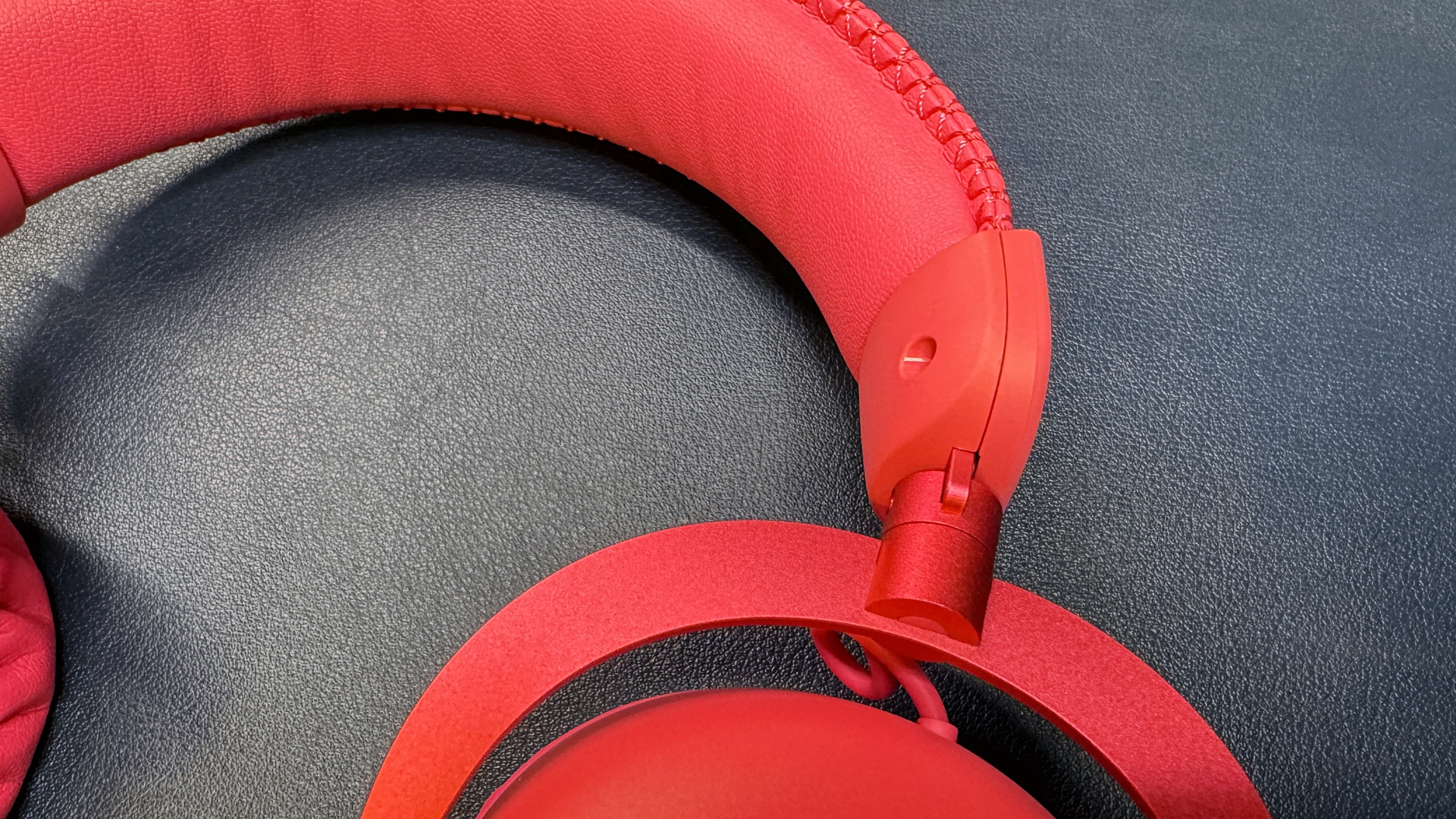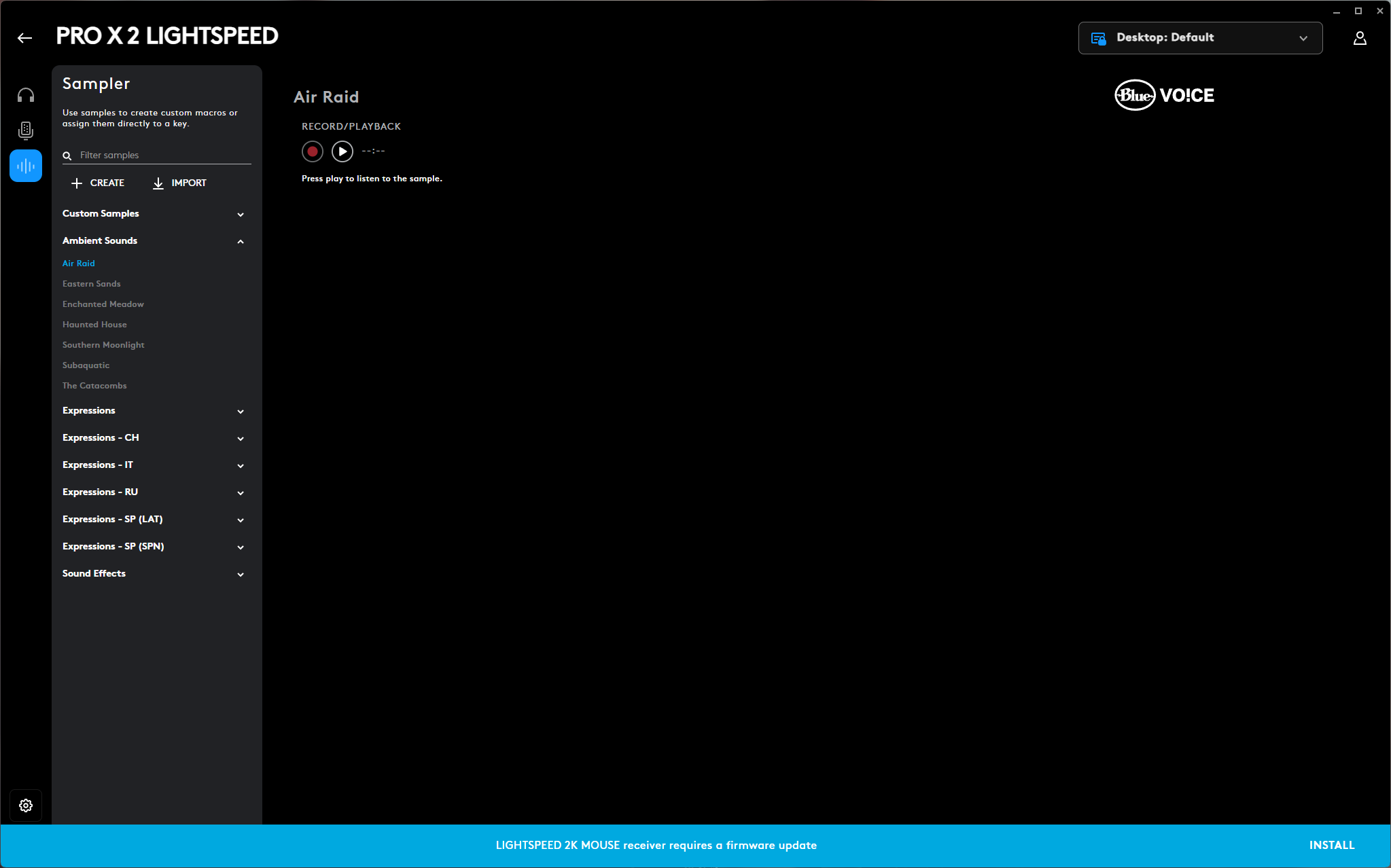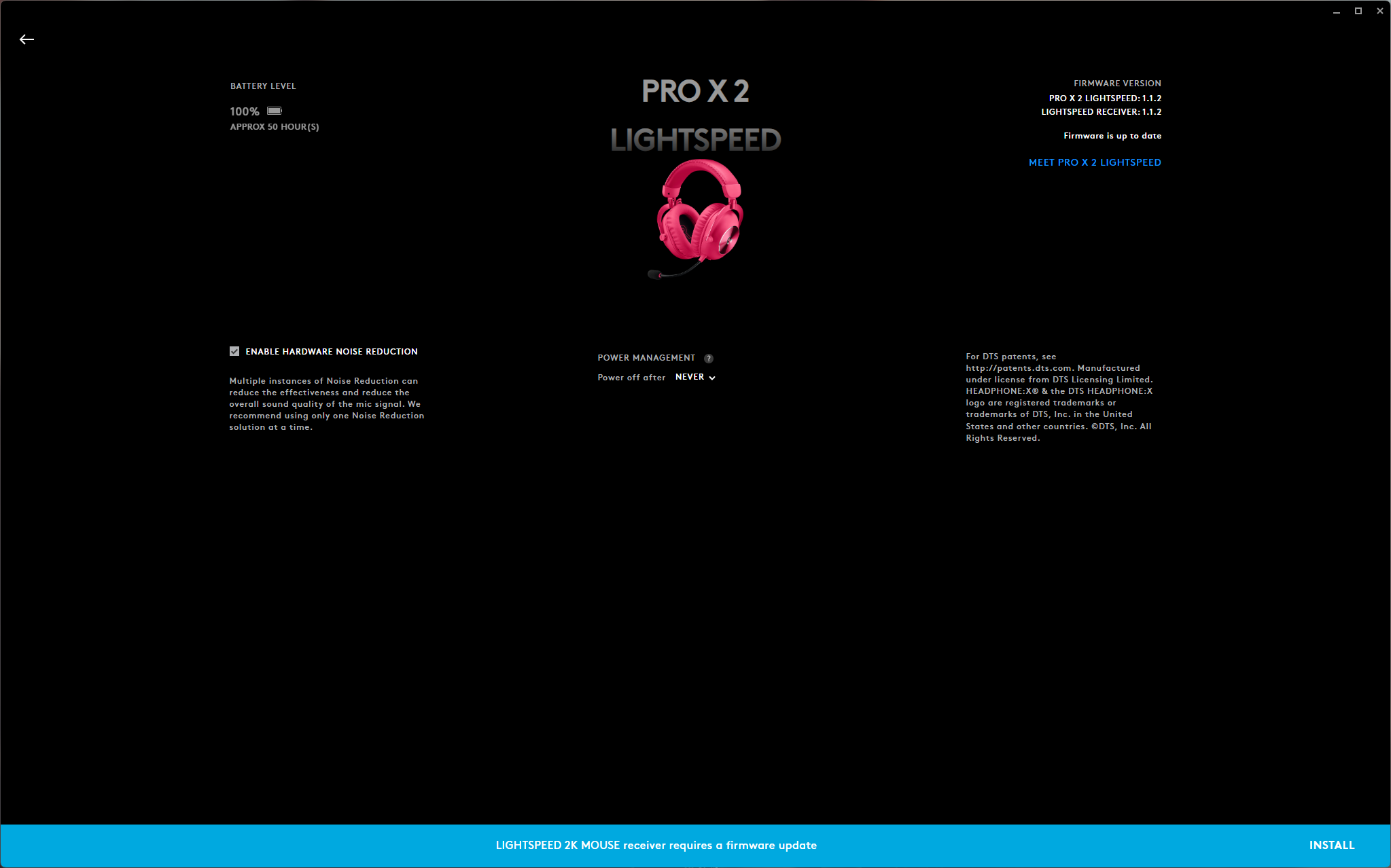Tom's Hardware Verdict
The G Pro X 2 Lightspeed is a solid all-around gaming headset, but it's really only for gaming.
Pros
- +
Good gaming sound quality
- +
Nice build
- +
Comfortable
Cons
- -
Nothing really stands out
- -
Mic is meh
- -
Narrow soundstage
Why you can trust Tom's Hardware
If you're going to pay more than $200 for one of the best gaming headsets, you're probably expecting more than just a gaming headset. Maybe an audiophile-esque listening headset with a broadcast-worthy mic isn’t in the cards, but it should probably have something that pushes it beyond a typical gaming headset.
The Logitech G Pro X 2 Lightspeed is the company’s current flagship gaming headset — and it's a great gaming headset. It's very sturdily-built, with a steel, aluminum, and plastic frame. It's very comfortable, with a moderate clamping force and plenty of adjustable parts. And it has an audio profile tuned for gaming — and that sounds great when you're trying to chat with teammates and play a game in the background. But it's a great gaming headset, and that's it — it doesn't bring anything unique to the table, and it's not particularly impressive outside of a gaming context. And that might not be enough for a headset that will set you back $250.
Design and Comfort of the G Pro X 2 Lightspeed
The G Pro X 2 Lightspeed is a wireless, circumaural (over-ear) gaming headset with a detachable boom mic. It has an adjustable steel headband padded with leatherette-covered memory foam, swiveling aluminum forks, and plastic earcups with machined aluminum speaker plates bearing Logitech G's signature G logo on each side. The headset comes in black, white, and pink. Our review unit was pink — a bright fuchsia that's been a staple of Logitech G's pro lineup for several years now, and which is, in my opinion, a nice break from the pale pink we normally see when brands try to brand things for "girls" (think: Razer's Quartz line). But that's probably just because I don't like pink.




The G Pro X 2 Lightspeed has a nice, sturdy build, and a design that's not too gamer-centric, though it's still a little bulkier than more lifestyle-leaning gaming headsets, such as the SteelSeries Arctis Nova Pro. Measured inside, the steel headband is eight inches long, and both sides extend an extra 1.75 inches (divided into 10 adjustment notches), for a total length of 11.5 inches. The aluminum forks are attached to the headband via a swiveling hinge — a new feature in the G Pro X 2 Lightspeed and a notable upgrade from its predecessor, which had non-swiveling forks — to allow for the headset to fit the curve of the human skull. This also lets the headset's earcups swivel fully flat, which makes for something more travel-friendly.





The headset's large, oval-shaped plastic earcups have a premium feel and a matte finish, and are capped with machined metal speaker plates in pink, with Logitech G's logo in silver. They come with leatherette-covered memory foam earpads installed, but Logitech also includes a pair of fabric-covered earpads in the box, so you have options. The leatherette-earpads are a little firmer and better at passively blocking outside noise, while the fabric-covered earpads are softer and more breathable.
The G Pro X 2 Lightspeed is a perfectly comfortable headset. The earcups are height-adjustable and swivel and tilt, which means the headset does a pretty good job of accommodating the size and shape of your head. The headset's clamping force is on the milder side of moderate — it's just strong enough that you won't forget you're wearing a headset, but it's not so strong that it won't fall off if you toss your head back. I had no issues wearing it for hours on end during my testing, but I also never forgot I was wearing a headset — it's not like the HyperX Cloud III, which I quickly forgot I was wearing. The G Pro X 2 Lightspeed is comfortable, but it's definitely always present.
Logitech’s headset is fairly lightweight, though it's not the lightest we've tested. The G Pro X 2 weighs 12.17 ounces (345g), which makes it a little heavier than its predecessor, the Logitech G Pro X Lightspeed (11.2oz / 317.5g), and 2.5 ounces heavier than the Logitech G735 (9.6oz / 273g) — another headset I often find myself forgetting I'm wearing. It's also heavier than our current top pick, the Razer Blackshark V2 Pro (2023) (11.29oz / 320g). But the weight didn't make much of a difference in terms of comfort or wearability, and it's still over five ounces lighter than the Audeze Maxwell (17.28oz / 490g).
Get Tom's Hardware's best news and in-depth reviews, straight to your inbox.


All of the G Pro X 2 Lightspeed's controls are on its left earcup. From back to front, you'll find a power switch, a volume wheel, a mic mute switch, a USB-C port for charging, a Bluetooth pairing button, and a 3.5mm port for plugging in the detachable boom mic. The headset has no lighting save for an indicator LED behind the power switch. On the right earcup, there's a 3.5mm jack for plugging in a 3.5mm aux cable, which is included in the box.
The controls are fairly intuitive and easy to learn quickly, mostly because they're pretty simple — there are no multi-function clickable dials that do everything from skipping tracks to changing EQ settings that you have to memorize. Of course, this means you'll have to do all of your sound and mic tweaking in the accompanying software (Logitech G Hub), which is at least pretty straightforward when it comes to audio. The mic mute button is a push-button toggle (the mic is muted when the button is pushed out) and it plays a sound when pressed, but there's no other way to quickly tell that the mic is muted (e.g. a light on the mic itself). This is an issue with the majority of gaming headsets, however, and at least the G Pro X 2 Lightspeed's mic can be detached to guarantee others can't hear you.
The G Pro X 2 Lightspeed comes with several accessories in the box. These include a 5.9-foot (1.8m) rubber USB-A to USB-C cable for charging, a 5.9-foot (1.8m) 3.5mm cable for an analog connection, a 2.4GHz wireless USB-A dongle with a 3.5mm port, a detachable boom microphone, and an extra pair of cloth-covered memory foam earpads, as well as a soft, lightly-padded zippered storage bag.
Specs
| Driver Type | Dynamic (50mm Graphene) |
| Impedance | 38Ω |
| Frequency Response | 20 Hz - 20,000 Hz |
| Design Style | Circumaural (over-ear), closed back |
| Microphone Type | 6mm Cardioid Condenser |
| Connectivity | 2.4GHz wireless, Bluetooth, analog |
| Weight | 12.17oz / 345g |
| Cord Length | 5.9ft / 1.8m USB-A to USB-C 5.9ft / 1.8m 3.5mm analog |
| Battery Life | 50+ hours |
| Lighting | None |
| Software | G Hub |
| MSRP / Price at Time of Review | $249.99 / $249.99 |
| Release Date | May 24, 2023 |
Audio Performance of the G Pro X 2 Lightspeed
The G Pro X 2 Lightspeed has 50mm graphene dynamic drivers with a frequency response range of 20 Hz - 20,000 Hz. This is a pretty typical frequency response range for a gaming headset, though we've recently seen quite a few headsets with wider response ranges as brands have been trying to move toward a more audiophile-tuned sound profile. Graphene drivers are somewhat unique, though we also saw them in Corsair's Virtuoso Pro. The G Pro X 2 Lightspeed does not have active noise cancellation (few gaming headsets do), but the leatherette-covered earcups do a decent job of passively blocking noise and preventing sound leakage.
Audio performance of the G Pro X 2 Lightspeed is good, with fairly neutral mids and a slightly bumped-up bass out of the box. Without changing anything in G Hub, the headset's default sound profile is definitely better for gaming than it is for listening to music (not too surprising; it is, after all, a gaming headset). You can change the sound profile in G Hub, which has an equalizer and comes with a handful of basic presets, as well as virtual surround sound.
This isn't my favorite headset for listening to music, but it's (mostly) not because of the sound profile. The headset does a decent job with both the low- and mid-range — the bass is turned up a little but it's not overpowering or muddy, though it doesn't have the power you'll feel from a headset like the Maxwell. Mids are nicely flat and balanced on this headset, which is nice to hear, even if it's not the most exciting sound profile for gamers. Highs definitely leave something to be desired though, and higher vocals especially sounded thinner and less bright than I'm used to hearing.
But my bigger issue was the soundstage, which feels very narrow. Not that I expected something particularly wide — this is a closed-back gaming headset, after all — but music felt especially close and compressed around my head with the G Pro X 2 Lightspeed. This wasn't (surprisingly) too much of a problem with gaming: There was still enough room for decent directional sound, and I could hear and accurately pinpoint gunfire and footsteps without turning on the virtual surround sound (which performed better than I thought it would, too). It was slightly more overwhelming in multilayered audio environments, such as the jungles of Uncharted 4, but I didn't see this as necessarily a bad thing — jungles are kind of supposed to sound like that.
The audio was also well-suited to voice chatting and listening to multiple inputs — whether I was chatting with teammates while playing a game or talking to my D&D group while listening to background music. It was easy for me to hear what people were saying without getting distracted by background tracks (but also without losing said background tracks to the conversation). It just wasn't great for listening to music — most gaming headsets aren't, but the G Pro X 2 Lightspeed is pretty far down the list of headsets I'm going to reach for in that situation.
Microphone of the G Pro X 2 Lightspeed
The G Pro X 2 Lightspeed comes with a detachable boom microphone that sits at the end of a 3.35-inch (85mm) flexible metal gooseneck. It plugs into the headset via a 3.5mm jack with a shaped plug to guide orientation. The mic itself has a 0.24-inch (6mm) electret condenser capsule with a cardioid polar pattern and a frequency response of 100 - 10,000 Hz.
The mic is... not particularly impressive. Headset mics aren't known for their quality; if you're serious about sounding good, you can pick up one of the best gaming microphones for as low as $60. But the G Pro X 2 Lightspeed's mic is a little below average, especially if you use it without turning on the Blue Vo!ce effects in G Hub. Without any help from software, the mic makes your voice sound somewhat stilted and compressed — though it will still be fine for things like chatting with teammates while gaming, so long as you're not streaming.
Turning on G Hub's Blue Vo!ce effects does help boost the mic quality a little — it has various options for tweaking sound, including a tri-band equalizer, a de-esser, a compressor, and noise reduction, as well as several preset sound profiles with names like "Broadcaster 1" and "Warm and Vintage." With the Blue Vo!ce features activated, the mic can make your voice sound warmer and fuller — but still a little unnatural from the processing and filtering. The software did a good job of eliminating background noise — I didn't have any complaints about my loud typing or even my barking dogs when I was talking to people during my testing.
This mic will get your voice through — pretty clearly, with some help from software — but it won't make you sound good.
Features and Software of the G Pro X 2 Lightspeed
The G Pro X 2 Lightspeed offers three forms of connectivity — low-latency 2.4GHz "Lightspeed" wireless, Bluetooth, and analog (wired, 3.5mm). It comes with a 2.4GHz wireless USB-A dongle and an analog cable, as well as a USB-C to USB-A cable for charging. The USB-A dongle has a 3.5mm jack, which you'll need to plug the 3.5mm cable into if you want to be able to control the headset with G Hub over a wired connection.
Gamers will mostly be using the low-latency 2.4GHz wireless connection, which is solid and consistent so long as there aren't any major obstacles between you and your PC. Logitech cites the wireless range as 98.3 feet (30m), but I was able to get almost twice that distance from my PC and still maintain a solid connection. (Of course, the connection broke down as soon as I put a concrete wall between me and my PC, but that's pretty standard for basically every headset I've tested.)
Tapping the Bluetooth button on the left earcup once will switch between 2.4GHz wireless and Bluetooth. The G Pro X 2 Lightspeed does not allow for simultaneous listening from two sources, though. This is a little disappointing because we've seen simultaneous wireless connections in other Logitech headsets (e.g. the Logitech G735), but perhaps not too surprising as it seems to be a tricky feature to implement perfectly.
Like all of Logitech G's products, the G Pro X 2 Lightspeed is configurable via Logitech's G Hub program. It's not my favorite software, but it's fairly straightforward when it comes to headset configuration — there's a section for audio tuning, which has an equalizer, some presets, and virtual surround sound; a section for Blue Vo!ce effects; and a virtual sound sampler which you're unlikely to use in a headset-specific capacity (you can set it up using most of Logitech's devices, but to play the sounds you'll need to assign them to buttons or keys — and the G Pro X 2 Lightspeed doesn't have any of those to spare). There's also a settings section, where you can change power savings settings and update the firmware.




Logitech says the G Pro X 2 Lightspeed gets up to 50 hours of battery life over its 2.4GHz wireless connection, which is good but not the best we've seen in a headset. That said, the headset definitely exceeded this in my testing — both while it was actively playing music/sound and while it was idle. You can adjust the headset's power management settings in G Hub so that it automatically turns off after 1, 2, 5, 10, 15, or 30 minutes while idle, or you can set it to never turn off. I set it to never turn off and kept forgetting to manually turn the headset off, and the headset managed to go more than a week without a charge — quite a bit longer than 50 hours. (It wasn't active listening, sure, but it's nice to know that your headset will probably still have a charge if you leave it sitting around for a few days.)
Bottom Line
The Logitech G Pro X 2 Lightspeed is a good gaming headset — it sounds good where it counts (while gaming, or chatting and gaming). It has a solid low-latency wireless connection and better battery life than expected, and it's comfortable and well-built. But considering nothing really stands out about it aside from it being a solid all-around gaming headset, I'm not sure it's really worth the $250 asking price.
If you want something that connects to both 2.4GHz wireless and Bluetooth, but not simultaneously, Razer's BlackShark V2 Pro (2023) offers dual wireless connectivity, better battery life, and a much better microphone for $200. And if you don't need the Bluetooth at all, HyperX's Cloud III Wireless is extremely comfortable and is also a solid all-around performer for just $170. While the G Pro X 2 Wireless does have more connectivity options than either of those two headsets, it's stuck in a weird in-between place where it can't even mix sources when one is analog (like the Audeze Maxwell can). Maybe it's just me, but I'd expect a little more for well over $200.
MORE: Best PC Gaming Headsets
MORE: Best Wireless Gaming Headsets
MORE: Best Gaming Keyboards
MORE: Best Gaming Mouse

Sarah Jacobsson Purewal is a senior editor at Tom's Hardware covering peripherals, software, and custom builds. You can find more of her work in PCWorld, Macworld, TechHive, CNET, Gizmodo, Tom's Guide, PC Gamer, Men's Health, Men's Fitness, SHAPE, Cosmopolitan, and just about everywhere else.



